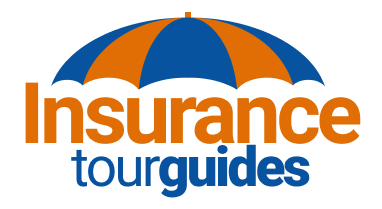Self-driving cars aren’t science fiction anymore—they’re rolling onto highways, test tracks, and even city streets. As technology reshapes how we drive, it’s also set to transform how we insure our vehicles. From shifting liability to new pricing models, the rise of autonomous vehicles (AVs) could completely redefine what “auto insurance” means in the coming decade.
How Autonomous Vehicles Are Changing the Road
The term autonomous vehicle covers a spectrum of automation. The Society of Automotive Engineers (SAE) defines six levels, from Level 0 (no automation) to Level 5 (fully self-driving). Most modern cars sit around Level 2 or Level 3—think adaptive cruise control, lane assist, or automatic braking.
As vehicles take on more driving responsibilities, human error—the cause of roughly 94% of car accidents—declines. That’s good news for safety, but it also raises a big question: Who’s at fault when a self-driving car crashes—the driver or the manufacturer?
The Shifting Landscape of Auto Insurance Liability
Traditional auto insurance is built around one core idea: humans cause accidents, and insurance protects against human error. In a self-driving world, that assumption starts to fall apart.
Here’s how liability may evolve as automation increases:
| Automation Level | Who’s Responsible in an Accident? | Insurance Focus |
|---|---|---|
| Level 0–2 (Driver Assist) | Driver | Standard personal auto insurance |
| Level 3 (Partial Autonomy) | Shared (Driver + Manufacturer/Software) | Hybrid coverage models |
| Level 4–5 (Fully Autonomous) | Manufacturer or Software Company | Product liability insurance |
In other words, as cars get smarter, insurers may shift focus from individual drivers to the companies that design the vehicles and software systems. Automakers could become the primary policyholders for their fleets, purchasing product liability or technology failure coverage.
What Happens to Personal Auto Insurance?
Even as self-driving technology advances, personal auto insurance isn’t going away overnight. For years—perhaps decades—human-driven and autonomous vehicles will share the road. During this transition, insurers may offer blended coverage, protecting both the driver and the technology behind the wheel.
You might see:
-
Dynamic premiums based on who or what is driving (you or the car’s AI).
-
Usage-based policies that track when self-driving mode is engaged.
-
Shared responsibility clauses between owner, automaker, and software provider.
Eventually, once Level 5 vehicles (fully autonomous) become mainstream, the need for traditional liability coverage may shrink dramatically. At that point, consumers might only need comprehensive coverage for theft, weather damage, or vandalism—while accident liability shifts entirely to manufacturers.
Insurance Models of the Future
Insurers are already experimenting with new coverage structures designed for the age of automation.
| Emerging Model | How It Works | Who Benefits |
|---|---|---|
| Manufacturer-Based Coverage | Automakers provide bundled insurance with the purchase of the car. | Tesla, Volvo, and other tech-forward brands. |
| Pay-Per-Mile Policies | Premiums depend on miles driven manually versus autonomously. | Drivers who use autopilot frequently. |
| Fleet & Subscription Insurance | Coverage applies to shared or rented self-driving fleets, like robotaxis. | Ride-share companies, delivery services. |
| Cybersecurity Insurance | Protects against hacking or software failure that causes accidents. | Vehicle owners, software developers, automakers. |
These models represent a fundamental change—from individual policyholders to corporate and technology-centered insurance structures.
The Role of Data and Telematics
Data will drive the future of auto insurance—literally. Self-driving cars generate enormous amounts of information about driving patterns, locations, speed, braking, and even driver attention.
Insurers can use this data to:
-
Set personalized premiums based on real performance.
-
Quickly verify claims using vehicle sensor records.
-
Detect fraud by comparing crash data to vehicle logs.
However, this raises privacy concerns. Who owns the data—the car owner, manufacturer, or insurer? Regulations around data access and transparency will become increasingly important as cars evolve into rolling computers.
The Potential Benefits of Self-Driving Cars for Insurers and Drivers
Despite the uncertainty, automation offers some major upsides:
| Potential Benefit | Impact on Insurance |
|---|---|
| Fewer Accidents | Reduced claims and payouts over time. |
| Lower Premiums | Safe automation could drive prices down for consumers. |
| Faster Claims Processing | Instant data reporting from vehicle systems. |
| New Insurance Products | Expanded markets for cybersecurity, product liability, and data protection. |
If accident frequency drops significantly, insurers may need to rethink pricing models entirely—possibly relying more on technology-related policies than traditional driver-based ones.
Challenges Ahead: Legal, Ethical, and Economic Questions
The shift to autonomous vehicles raises tough questions:
-
Legal: Who’s legally responsible when software causes harm?
-
Ethical: How should AI make split-second “crash decisions”?
-
Economic: What happens to jobs in auto repair, trucking, and insurance sales?
Many experts predict a gradual evolution rather than a sudden overhaul. Insurers, lawmakers, and automakers will likely collaborate to create hybrid systems that balance innovation with accountability.
Preparing for the Transition as a Driver
If you own or plan to buy a vehicle with self-driving features, there are a few things you can do to stay ahead:
-
Review your policy for coverage related to autonomous technology or software failures.
-
Keep software updated to maintain safety and coverage compliance.
-
Report any malfunctions immediately—insurers may require data logs for claims.
-
Consider insurers that specialize in high-tech or telematics-driven policies.
While the technology continues to evolve, awareness and adaptability are your best tools.
A Roadmap for the Future of Insurance
The road to full automation will take time, but the direction is clear: auto insurance is shifting from people to products, and from drivers to data. Over the next decade, expect new insurance partnerships, smarter pricing models, and policies that look nothing like what we know today.
For drivers, that means a safer road ahead—and possibly, a cheaper one too. But as with any major technological revolution, staying informed is the key to navigating what comes next.
